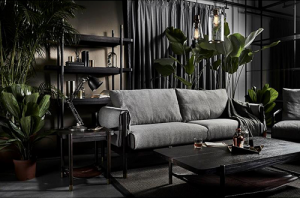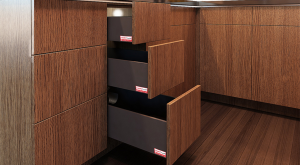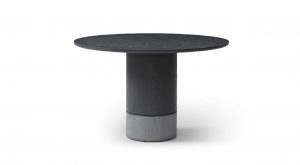Featured Post
Ultimate Guide to Furniture Care for Different Materials: Keep Your Bed and Furniture Looking New
Furniture is more than just functional pieces in our homes; it's an investment in comfort, style, and memories. Whether it's a cozy bed where you rest after a long day or a dining table where family gathers, proper care ensures your furniture stays beautiful and durable for years. In this guide, we'll explore how to care for furniture made from different materials—wood, leather, fabric, and metal—with a special focus on beds and general furniture care. From personal tips to expert advice, you'll learn how to protect your pieces and keep them looking new.

Why Furniture Care Matters
Taking care of your furniture isn't just about aesthetics; it's about preserving the quality and extending the lifespan of your pieces. Different materials require unique care methods, and understanding these can prevent damage, reduce wear, and save you money on repairs or replacements. Plus, well-maintained furniture enhances your home's ambiance and comfort.
In this article, we'll cover: - Wood Furniture Care: Tips for beds, tables, and more. - Leather Furniture Care: Keeping sofas and chairs supple. - Fabric Furniture Care: Maintaining upholstery and cushions. - Metal Furniture Care: Preventing rust and scratches. - General Tips for All Furniture: Universal care practices.
Let's dive into the specifics of each material, starting with wood— a classic choice for beds and many other furniture pieces.
Caring for Wood Furniture
Wood furniture, especially beds, brings warmth and timeless elegance to any room. However, wood is susceptible to scratches, water damage, and fading if not properly maintained. Here's how to keep your wood furniture in top shape:
1. Regular Dusting
Dust can act like sandpaper on wood surfaces, causing tiny scratches over time. Use a soft, lint-free cloth or a microfiber duster to gently remove dust at least once a week.
2. Use Coasters and Mats
Water rings and heat marks are common enemies of wood furniture. Always use coasters under drinks and placemats under hot dishes to protect the surface. I learned this the hard way when a forgotten glass left a permanent ring on my favorite coffee table!
3. Avoid Direct Sunlight
Prolonged exposure to sunlight can fade and dry out wood. Position your furniture away from direct sunlight or use curtains to filter the light.
4. Polish and Wax
Using a high-quality wood polish or wax every few months can enhance the shine and provide a protective layer against scratches. Be sure to follow the manufacturer's instructions for best results.
5. Handle with Care
When moving wood furniture, lift it instead of dragging to prevent scratches on both the furniture and your floors.
For more detailed information on wood care, check out this guide from the Furniture Industry Research Association.
Personal Tip: I once restored an old wooden bed frame using a mixture of olive oil and lemon juice. It not only cleaned the wood but also gave it a fresh, natural scent. Just be sure to test any homemade cleaners on a small area first!

Caring for Leather Furniture
Leather furniture exudes luxury and sophistication, but it requires regular care to stay soft and supple. Here's how to maintain your leather pieces:
1. Regular Cleaning
Dust and dirt can accumulate on leather, so wipe it down with a soft, damp cloth weekly. For deeper cleaning, use a leather cleaner specifically designed for furniture.
2. Conditioning
Leather can dry out and crack over time. Apply a leather conditioner every 6-12 months to keep it moisturized and prevent damage.
3. Avoid Sharp Objects
Leather is prone to punctures and tears. Keep sharp objects away and be mindful of pets that might scratch the surface.
4. Protect from Sunlight and Heat
Direct sunlight and heat sources can cause leather to fade and dry out. Position your furniture away from windows and heaters.
5. Blot Spills Immediately
If you spill something on leather, blot it gently with a clean cloth. Avoid rubbing, as this can spread the stain.
For more expert advice, visit the Leather Working Group, a reputable source on leather care.
Personal Insight: I once spilled red wine on my leather sofa and panicked! But I quickly blotted it with a damp cloth and used a leather cleaner, and the stain came right out. Quick action is key!

Caring for Fabric Furniture
Fabric furniture, from upholstered beds to cozy sofas, adds comfort and style to your home. However, it can be a magnet for stains and odors. Here's how to keep it fresh and clean:
1. Vacuum Regularly
Use a vacuum with an upholstery attachment to remove dust, crumbs, and pet hair at least once a week.
2. Spot Clean Stains Promptly
Treat spills and stains as soon as they happen. Use a mild detergent or a fabric cleaner suitable for your furniture's material. Always test cleaners on a hidden area first.
3. Use Fabric Protectors
Applying a fabric protector can help repel spills and stains, making cleaning easier. Reapply as needed, especially after deep cleaning.
4. Rotate Cushions
To ensure even wear, rotate and flip cushions regularly. This also helps maintain the furniture's shape.
5. Professional Cleaning
Consider professional cleaning every 12-18 months to remove deep-seated dirt and refresh the fabric.
For more tips, check out this fabric care guide from the American Cleaning Institute.
Personal Tip: I keep a small spray bottle of water and mild soap handy for quick spot cleaning. It's saved my fabric sofa from many potential disasters!

Caring for Metal Furniture
Metal furniture, whether it's a bed frame or a dining set, offers durability and a modern aesthetic. However, it can be prone to rust and scratches. Here's how to care for it:
1. Regular Cleaning
Wipe metal surfaces with a soft, damp cloth to remove dust and dirt. For tougher grime, use a mild soap solution.
2. Prevent Rust
If your metal furniture is outdoors or in a humid environment, apply a rust-resistant spray or wax to protect it. Check for any signs of rust and treat them promptly with a rust remover.
3. Polish for Shine
Use a metal polish to maintain the shine and protect against scratches. Follow the product instructions for best results.
4. Avoid Harsh Chemicals
Harsh cleaners can damage the finish on metal furniture. Stick to mild soaps and avoid abrasive scrubbers.
5. Protect from Scratches
Use felt pads under objects placed on metal surfaces to prevent scratches. When moving metal furniture, lift it carefully to avoid dragging.
For more information on metal care, visit the Metal Construction Association.
Personal Insight: I once left a metal chair outside during a rainy week and found rust spots. After sanding them down and applying a rust-resistant spray, it looked good as new. Prevention is key!
General Furniture Care Tips
Regardless of the material, some care practices apply to all furniture:
- Avoid Overloading: Don't place heavy objects on furniture not designed to support them.
- Control Humidity: Use a dehumidifier in damp areas to prevent mold and warping.
- Regular Inspections: Check for loose screws, wobbly legs, or other signs of wear and address them promptly.
- Use Furniture Pads: Protect floors and furniture by using pads under legs.
By following these universal tips, you'll ensure your furniture remains in excellent condition.

Conclusion
Caring for your furniture doesn't have to be complicated. By understanding the specific needs of each material—wood, leather, fabric, and metal—you can keep your pieces looking beautiful and functioning well for years. Remember, regular maintenance, quick action on spills, and a little TLC go a long way. Whether it's your cherished bed or a favorite sofa, proper care ensures your furniture remains a source of comfort and pride in your home.









